 Jan Reynolds is a writer, photographer, and adventurer who has written over fourteen nonfiction books for children about her travels. Her work has appeared in numerous publications including National Geographic, The New York Times, and Outside Magazine. Reynolds is an avid skier, mountain climber, and adventurer who held the record for women’s high altitude skiing, was part of the first expedition to circumnavigate Mount Everest, and performed a solo crossing of the Himalayas.
Jan Reynolds is a writer, photographer, and adventurer who has written over fourteen nonfiction books for children about her travels. Her work has appeared in numerous publications including National Geographic, The New York Times, and Outside Magazine. Reynolds is an avid skier, mountain climber, and adventurer who held the record for women’s high altitude skiing, was part of the first expedition to circumnavigate Mount Everest, and performed a solo crossing of the Himalayas.
You are a world-class adventurer and athlete in addition to being a children’s author. Were you always a writer, or were you inspired to begin writing by your travels?
I’ve always been a writer…. I had a short story, fiction, that was published when I was in high school. I’m working on a young adult fiction book right now!
What was your hardest trip or exploration? Was there ever a moment in your travels when you wanted to turn back? What inspired you to keep going?
When I was crossing the Himalaya solo, I almost turned back, I was so sick (I talk about this in my documentary video, “Cultural Adventure with Jan Reynolds”). I lived in my tent alone for about four days and nights, and was found by a Sherpa and his son who nursed me back to health, and I finished my journey going from Nepal into Tibet over the Himalaya following the salt trade. I kept going because I needed to complete my trade on this salt trade route. I was working for National Geographic magazine, and I wanted to get my story!!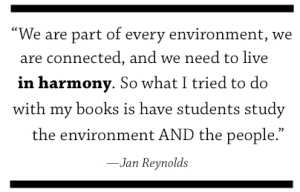
Your books, especially your Vanishing Cultures series, chronicle the time you spent with endangered indigenous groups around the world. Since those books were published, have you gone back to visit any of the communities you connected with? Do you know how they’re doing?
I’ve been back to visit many of the places in my Vanishing Cultures series, and what I’ve found is that they are vanishing in terms of their traditional lives. The young are looking for jobs in the cities and towns nearby. It isn’t possible to make a living traditionally. For example trucks and planes are much faster crossing the Sahara than a camel, so camel caravans cannot make profitable trades anymore.
Many of the groups about which you’ve written have a history of being exploited by outsiders. How do you first approach them about doing a project? How do you build trust with the community?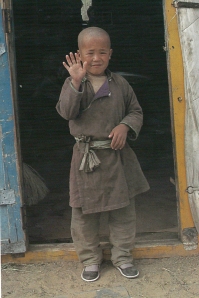
When I visited these people it was a matter of me just showing up. So approaching them was literally just being there, it was so far out in most cases, they were just curious about me, that was my approach! I built trust by making one really good friend, and they became my mentor and guardian of sorts, and I always traveled as a trader with trade goods, silk, wool scarves, gold and silver jewelry, that opened doors too.
It is not always easy to get people to “act natural” in front of a camera, especially people who are not often photographed. How do you get your subjects comfortable in front of your camera? What do you do to ensure that your presence as a photographer does not change their behavior?
I dress like the locals as much as I can so that when they look at me behind the camera they aren’t having funny expressions! I also hang out with people quite a while before I start shooting so they are comfortable with me. I also give them a little snap shooter with a flash. Kids really love that, and they take pics of me, whether they know they are or not…. it’s like playing a game together. I try not to bring in things that are junky or techno, my trade items are things they know, and I try to blend in as much as I can so I’m not intrusive. I’m not there to teach or train, I’m just there to be, and record.
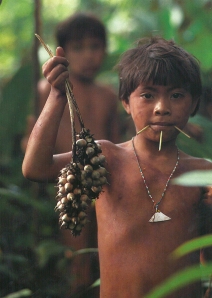 Why do you think it’s important for a young reader from, say, Nebraska, to learn about a small indigenous culture from the Amazon Basin? What do you think are the big benefits of geo-literacy and global education?
Why do you think it’s important for a young reader from, say, Nebraska, to learn about a small indigenous culture from the Amazon Basin? What do you think are the big benefits of geo-literacy and global education?
I think all kids need to know that all environments around the world have people in them, the Amazon had a thriving community of people throughout, before the Spanish explorers brought disease and killed the local Indians by the thousands. Now kids study plain environments, the rainforest, the desert, etc. without people in them, and it gives kids the wrong idea, that man and environments are separate.
We are part of every environment, we are connected, and we need to live in harmony. Man lived his daily life in all the environments on earth. We can still, we just need to be partners with the earth. So what I tried to do with my books is have students study the environment AND the people in that environment at the same time, that’s more normal….together, not separate.
What travel tips can you offer to young readers traveling abroad for the first time?
When you travel abroad, befriend a local, they are the doorway to understanding the people and the environment, and how they work together, through traditions, food, ceremonies, and so on.
Thanks for joining us, Jan! Feel free to leave further questions for Jan in the comments section below.
Further Reading:
Raising Global Citizens: Jan Reynolds Author Study
Where in the World: How One Class Used Google Maps to Explore the Vanishing Cultures Series
Beyond “Did You Know. . .”: Teaching Geo-Literacy Using the Vanishing Cultures Book Series
Filed under: guest blogger Tagged: environmentalism, Himalaya, informational text standards, interview, Jan Reynolds, National Geographic, nonfiction, photography, Travel, vanishing cultures



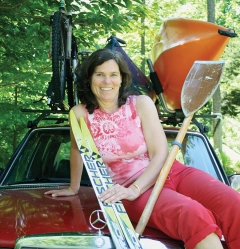
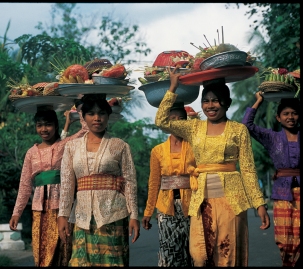

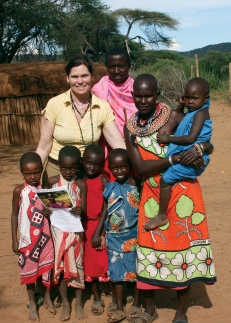
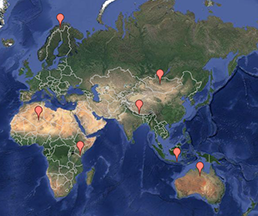

This is the second review I've read of this beautiful book in the last few minutes. Sounds wonderful. I must get my hands it!
Violet (http://bookbrew.wordpress.com)